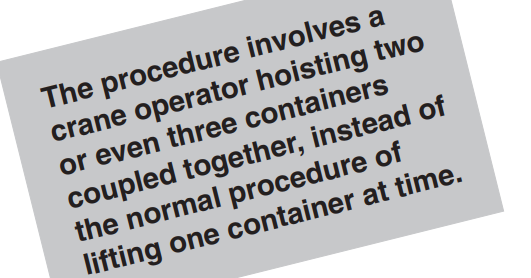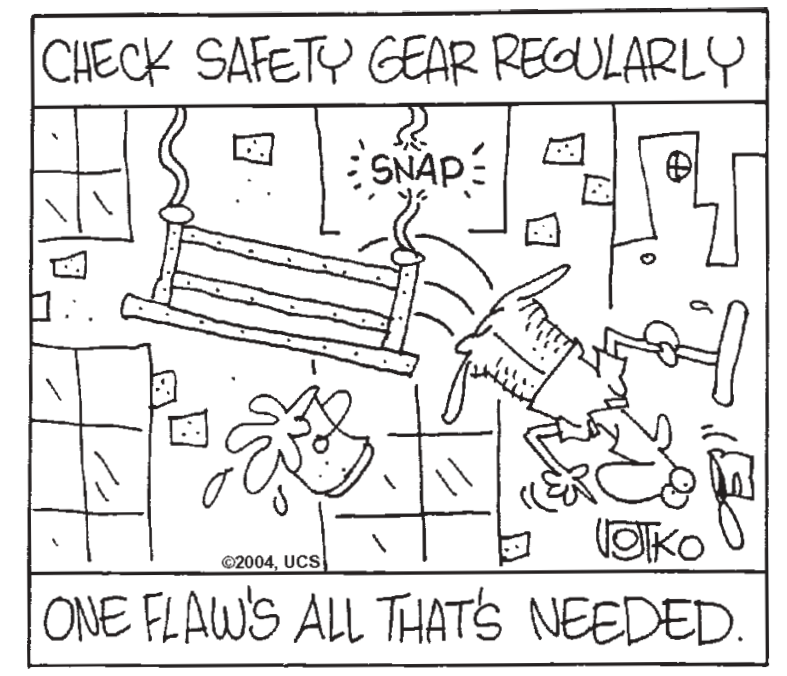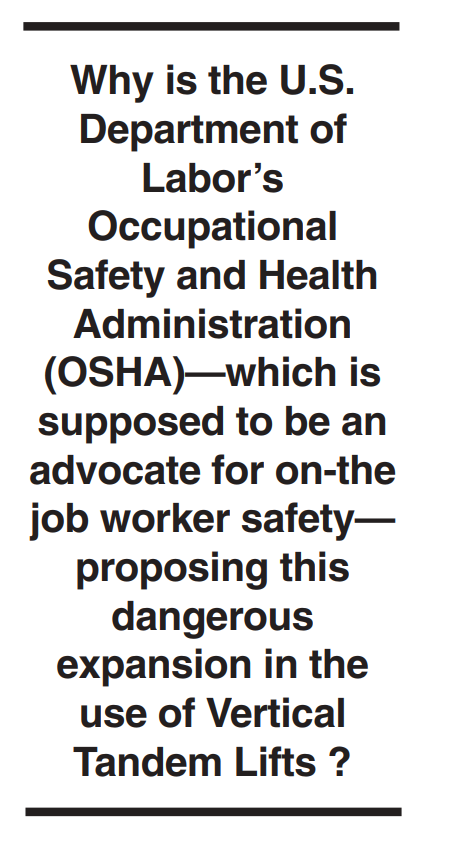Safety on the docks may be sacrificed to promote “free” trade and higher profits if the Bush Administration succeeds in implementing new rules to expand the use of Vertical Tandem Lifts (VTL).

The new rules are being proposed by the U.S. Occupational Safety and Health Administration (OSHA), which comes under the direction of Bush appointee Elaine Chao. Current OSHA regulations permit carriers to use vertical tandem lifts if both containers are empty. The new rules would permit the use of vertical tandem lifts to move containers and cargo weighing up to 20 tons.
Companies to save money
In coming up with these new rules, OSHA boasted that companies could save lots of money by using vertical tandem lifts. OSHA then did a detailed analysis that show exactly how shippers could cut their longshore workforce by 10 percent and still handle the same amount of cargo. OSHA also cited Section 2532 of the Trade Adjustment Act that forbids federal agencies from making standards “that creates unnecessary obstacles to the foreign commerce of the United States.”
ommerce of the United States.” While spending a lot of time detailing how shippers can save money by cutting workers, OSHA barely considers the increased dangers and risk of injury to longshore workers posed by expanding the use of vertical tandem lifts. OHSA briefly mentions the danger of tip-overs when moving two vertically connected containers. OSHA even suggests that conditions would be safer because fewer lifts would be required to load and unload a vessel.
This is strange stuff coming from an agency charged with the safety of American workers. But under President George Bush, every government agency, including the Department of Labor and the Occupational Safety and Health Administration, have been turned around to do the bidding of capital. Governor Linda Lingle, following the Republican Party line, has done the same with Hawaii state agencies.
Dangerous assumptions
OSHA’s proposed VTL rule and its estimate of a 10 percent cost savings are based on a lot of wishful thinking and dangerous assumptions.

The movement of more than one container at a time would rely on the use of four twist locks that connect the top container to the bottom container. These twist locks were originally designed and continue to be used to lock containers together during transit to prevent them from shifting. They were never intended to be used for lifting and moving containers, and were thus made of cast iron, a relatively brittle metal. Metal fatigue and hairline cracks can develop in the metal and the locking mechanism can get clogged with dirt, leading to failures. The corner castings of each container are also likely points of failure.
OSHA suggests that only certified twist locks be used for VTLs and the locks and corner castings be inspected each year by visual inspection. OSHA thinks this can be done at a cost of $1 per lock—that is because OSHA’s idea of inspection is for a “trained” person to look at each lock. No x-rays or other testing for metal fatigue are required.
There are a number of manufacturers of twist locks around the world that utilize a wide variety of designs and materials of different strengths and quality. A vessel or marine terminal will have hundreds or thousands of twist locks in use. OSHA suggests that these can be kept in separate boxes and somehow, only the certified and inspected locks will be used on VTLs.
Many weak links
The study on the strength of twist locks concluded that corner castings of shipping containers were more likely to fail before the twist locks. Like twist locks, these containers were designed for one purpose—to contain cargo—and were not intended to be attached to other containers and then lifted together up to 120 feet in the air. These containers undergo a great deal of wear and tear and get damaged on the road, in the terminal and in transit aboard a ship.
There are millions of containers in use, and OSHA assumes only Why is the U.S. Department of Labor’s Occupational Safety and Health Administration (OSHA)—which is supposed to be an advocate for on-the job worker safety— proposing this dangerous expansion in the use of Vertical Tandem Lifts ? the certified and inspected containers will be used in VTLs.
There are other dangerous assumptions—that the load is evenly distributed and will not shift within the containers while hoisting; that the wind comes from only one direction and is less than 34 mph; that all four twist lock handles are fully engaged; that the weight of the cargo in VTLs is less than 20 tons; that the vessel stowage plans are accurate; that all cranes will have load indicators; and on and on.
OSHA’s 10 percent cost savings was based on a computer model and perfect conditions. In the real world, shippers will likely discover VTLs to be more costly and much more dangerous. Unfortunately, there are some shippers who will try to use VTLs and longshore workers will pay with their lives.
The ILWU is opposed to OSHA’s proposed rule change on vertical tandem lifts and is working actively to prevent any further expansion of this dangerous and unsafe practice.

